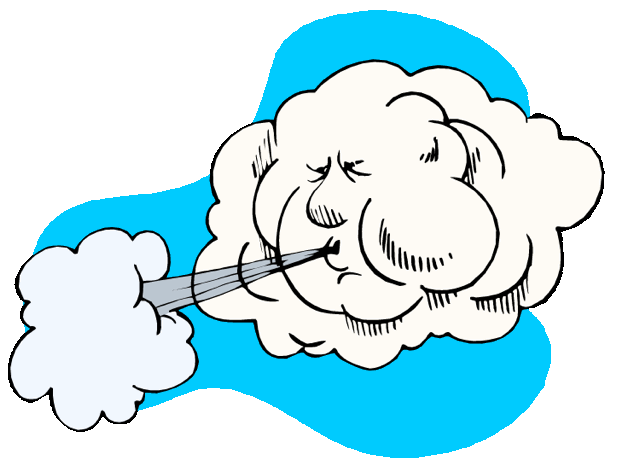
Cycling and Wind
Nobody knows,
Where the wind comes from,
Where the wind goes.
~ A.A. Milne
A friend and I were riding the other day and joking around about how wind is “wind” in winter, but in summer, it’s just a “breeze.” Is that because we’re in better shape in summer, so wind resistance is easier to deal with? Undoubtedly, that’s some of it, but there’s more to it than that.
Enter the Ideal Gas Law, which calculates the density (how much a volume of air weighs) of dry air as a function of its pressure and temperature. Dry air is air with no moisture content — zero humidity.
Plugging some numbers into the Ideal Gas Law reveals that a cubic meter of 77º dry air has a density of 1.18 kg/m3 and a cubic meter of 32º dry air has a density of 1.29 kg/m3. Warm air is lighter than cool air.
Air exerts a force against the bike rider which we refer to as wind resistance. How much force depends on air’s density (which we calculated above), the square of the velocity of the rider, the drag coefficient (based on the shape of the rider and bike) and the cross sectional area of the rider and bike.
Everything else being the same, the wind resistance of 32º air is about 10% higher than the resistance of 77º air. So the perception that “wind” morphs into a “breeze” as the weather warms up is real.
Here’s something that’s completely counter-intuitive. Humid air is lighter than dry air. Read the informative blog referenced below for the reason why.
Hmmm. This means that a hot, humid day is better for cycling than a cold, dry day…at least in terms of wind resistance. How many of us would opt for the hot, humid day? Not many! Humid conditions introduce a lot of physical challenges for the cyclist. They usually override the benefits of that lighter, faster air. But to the extent that we can acclimate to that kind of weather, the easier the cycling will be.
Cycling and wind — fun things to think about the next time the wind or breeze blows!
_________________________________
References
